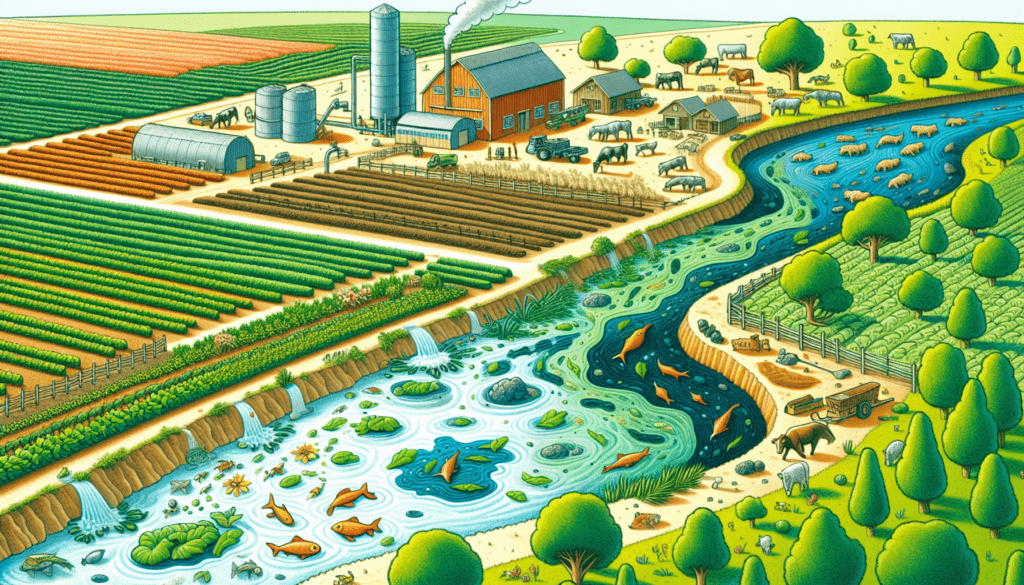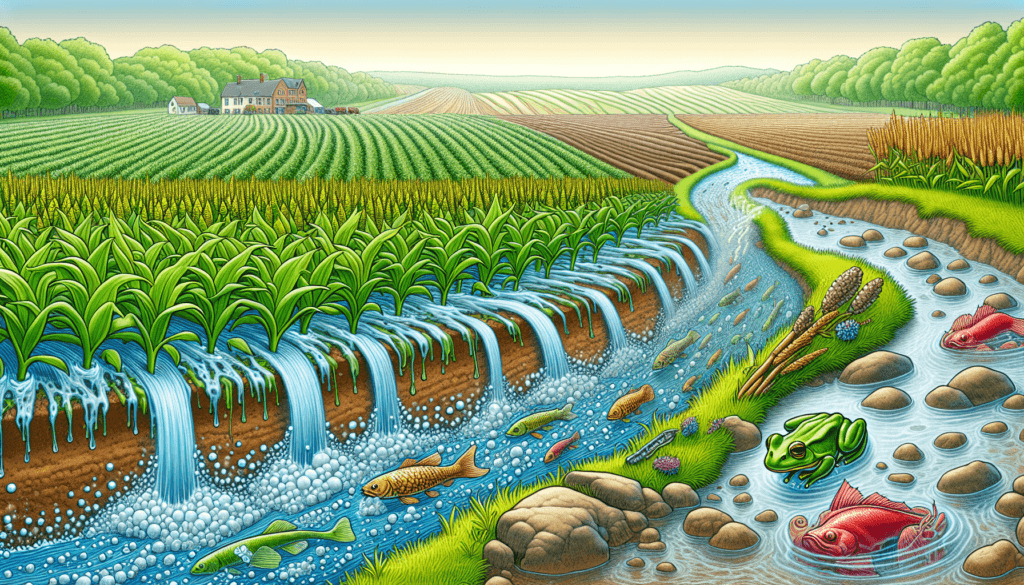Agricultural runoff, also known as farm runoff, refers to the excess water, chemicals, and sediments that flow from fields and livestock operations into nearby water bodies. This phenomenon occurs when rainwater or irrigation water washes away pollutants such as fertilizers, pesticides, and manure from agricultural lands, ultimately posing a significant threat to the quality and health of our water resources. Understanding the impacts and finding sustainable solutions to minimize agricultural runoff is crucial for safeguarding our ecosystems and ensuring a sustainable future for generations to come.
What is agricultural runoff?
Agricultural runoff is the movement of water, and any substances it carries, from agricultural fields into nearby bodies of water. This can include rivers, streams, ponds, and even groundwater. It occurs when rainwater or irrigation water flows over the land and picks up various pollutants along the way. These pollutants can include pesticides, fertilizers, animal waste, and sediment, among others. Agricultural runoff is a significant environmental concern as it can have detrimental effects on water quality, aquatic ecosystems, and human health.
The causes of agricultural runoff
There are several factors that contribute to the occurrence of agricultural runoff. One of the primary causes is the excessive use of fertilizers in farming practices. Fertilizers contain high levels of nutrients, such as nitrogen and phosphorus, which are essential for optimal plant growth. However, when these nutrients are applied in excess or at the wrong time, they can leach into nearby water bodies during rainfall or irrigation. Another major cause of agricultural runoff is the improper storage and management of animal waste. When not properly handled, manure can be washed away by rain or snowmelt and contaminate nearby water sources.

The impact on water quality
Agricultural runoff poses a significant threat to water quality. The nutrients and chemicals present in runoff can cause an imbalance in aquatic ecosystems, leading to the excessive growth of algae and other water plants. This process, known as eutrophication, depletes oxygen levels in the water and creates “dead zones” where fish and other aquatic organisms cannot survive. Additionally, the sediments carried by runoff can cloud the water, reducing light penetration and hampering photosynthesis for underwater plants. These changes in water quality can have far-reaching consequences, affecting not only aquatic life but also the availability of safe drinking water for human communities.

The ecological consequences
The ecological consequences of agricultural runoff can be devastating. As mentioned earlier, the excessive growth of algae due to nutrient pollution can lead to a decline in oxygen levels, suffocating fish and other aquatic organisms. The lack of oxygen in water bodies disrupts the natural food chain, causing a decline in species diversity. In some cases, harmful algal blooms can occur, releasing toxins into the water that can be harmful to both humans and animals. Additionally, the sediment carried by runoff can smother aquatic habitats, destroying breeding grounds and negatively impacting species that rely on specific substrate conditions.

The impact on human health
Agricultural runoff can also have direct implications for human health. The pollutants carried by runoff can contaminate drinking water sources, making them unsafe for consumption. Exposure to certain chemicals found in runoff, such as pesticides and herbicides, can have long-term health effects, including an increased risk of certain cancers and developmental issues in children. The toxins produced by harmful algal blooms can also affect human health, leading to skin rashes, respiratory issues, and even neurological disorders. It is essential to safeguard water resources and reduce agricultural runoff to protect the health and well-being of communities.

Strategies to mitigate agricultural runoff
Fortunately, there are various strategies that can be implemented to mitigate the impact of agricultural runoff. One of the most effective measures is the implementation of conservation practices, such as cover cropping, contour plowing, and buffer strips. These practices help to reduce soil erosion and prevent the loss of nutrients and sediment into water bodies. Additionally, precision agriculture techniques, such as variable rate nutrient application and irrigation management, can help farmers optimize fertilizer and water usage, reducing the potential for runoff. Proper manure management, including the use of storage facilities and nutrient management plans, is also crucial in minimizing the release of animal waste into water sources.

The role of government and regulation
Government agencies play a crucial role in addressing agricultural runoff. Regulations and policies aimed at reducing nutrient runoff and promoting sustainable farming practices have been implemented in many countries. These regulations may include requirements for nutrient management planning, mandatory buffer zones, and restrictions on the timing and amount of fertilizer application. Government funding and incentives programs can also assist farmers in implementing conservation practices and adopting more sustainable farming methods. Collaboration between farmers, scientists, policymakers, and environmental organizations is essential to developing effective strategies and ensuring the long-term health of our water resources.
In conclusion, agricultural runoff is a significant environmental concern with far-reaching implications. It negatively impacts water quality, aquatic ecosystems, and human health. Understanding the causes and consequences of agricultural runoff is crucial in developing effective strategies to mitigate its effects. By implementing conservation practices, proper manure management, and promoting sustainable farming techniques, we can work towards protecting our precious water resources and ensuring a healthier future for all.


